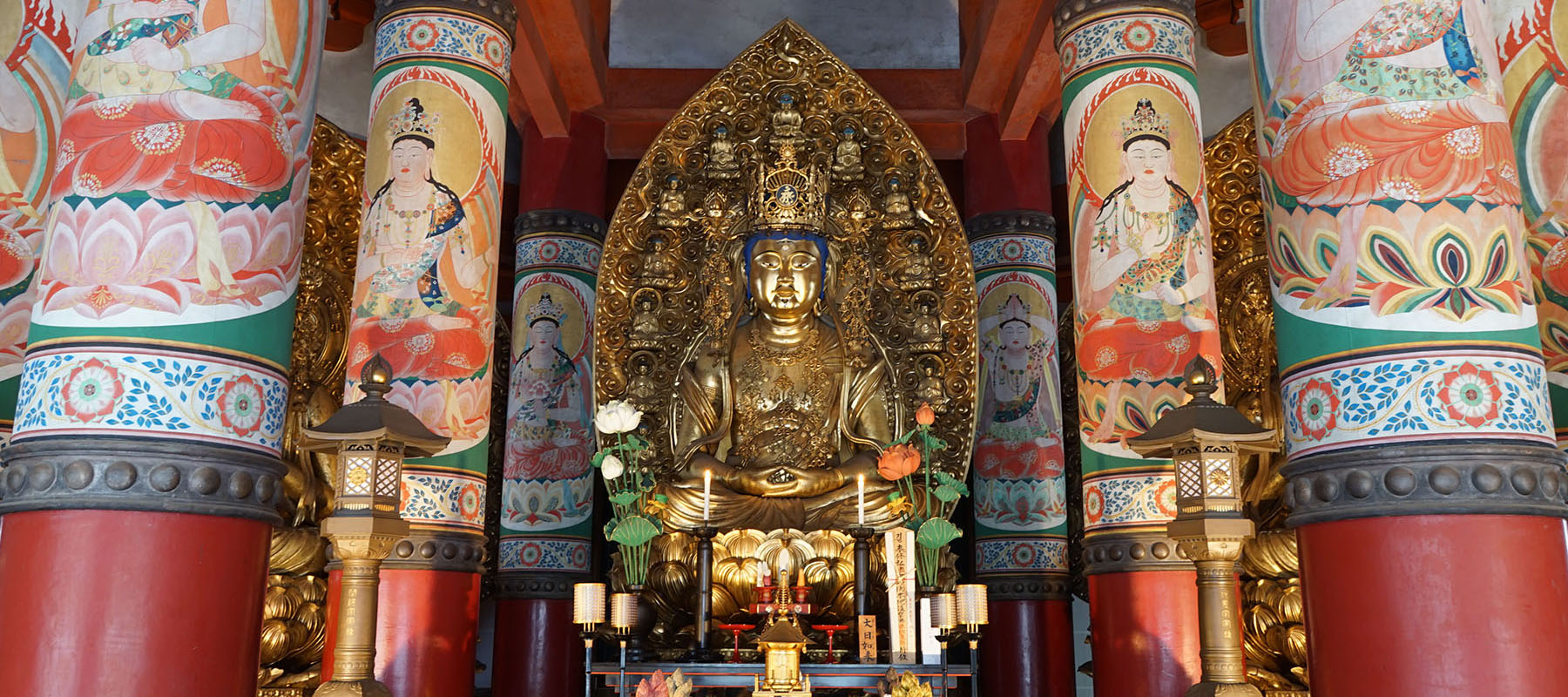KoyaQuest
Introduction to Shingon

Introduction to Shingon

Introduction to Shingon
The Buddhist sect brought to Japan by Kūkai in the ninth century is known as the Shingon sect. The name Shingon is written with the Chinese characters that mean "true speech" 真言, and it refers to one of the three main ways that practitioners establish a spiritual connection with Dainichi Nyorai (Mahā Vairocana), who is regarded by members of this sect as the cosmic and true Buddha.
Shingon is a form of Mikkyō 密教, or "Esoteric Buddhism," which arose in India and was transmitted to China in the eighth century. It was systematized and brought to Japan by the great Heian scholar and priest, Kūkai. As the name implies, Esoteric Buddhism stresses the importance of secret teachings which can only be passed directly from master to disciple. It views other, "exoteric" forms of Buddhism as simplified and provisional versions intended for the uninitiated general public.
In particular, Shingon places emphasis on three secrets: those of body, mind and speech.
These secrets, which are inherent in us all, are ineffable and cannot be directly communicated in words. They can, however, be revealed through the use of mudras, mantras and mandalas. Mudras are ritual gestures and poses. Mantras are mystical words or sounds repeated as part of a ritual recitation, and mandalas are visual representations of cosmic realms. Through the practice of Shingon rituals, it is believed that a practitioner can establish a spiritual connection to Dainichi Nyorai, who, as the embodiment of the universe itself, is made manifest in the perfect harmony of the six elements: earth, water, wind, fire, space and consciousness.


A distinct belief of Shingon is that the establishment of a spiritual connection to Dainichi Nyorai can enable a person to attain Buddhahood in his or her present existence. This doctrine is known as "sokushin jōbutsu" 即身成仏, which may be translated as "becoming a buddha in one's own body."
Although Shingon stresses the importance of direct transmission from master to disciple, many of its teachings are based on early Buddhist texts. These include the Mahāvairocana Sutra (or Dainichi-kyō) and the Vajraśekhara Sutra (or Kongōchō-kyō). Each of these finds visual representation in the two important mandalas that are central to Shingon faith and practice. These are the Diamond Realm Mandala and the Womb (or Matrix) Realm Mandala.
The former – known, in Japanese as the Kongōkai mandara – represents the indestructible and potential aspect of the universe. The latter depicts its dynamic aspect. It is called the Taizōkai mandara in Japanese. It may be said that the Womb Realm Mandala represents reality as it is perceived by the senses, while the Diamond Realm Mandala represents reality as it is perceived by the mind. The union of these two forms of perception is essential for spiritual awakening. For this reason, copies of these two mandalas are always displayed facing one another on either side of a Shingon altar.
These mandalas are featured in the ordination ritual to the Shingon faith in which new initiates are blindfolded and made to toss a flower onto one of the two mandalas. The ceremony is called the "Bond-Establishing Anointment," or "kechien-kanjō" 結縁灌頂, because the Buddha upon whom the flower lands will become the one that the new initiate is expected to emulate and pay especial devotion. This ceremony is held twice a year for three days in early May and October at the Kondō of Mt. Kōya.
© 2024, k. collins